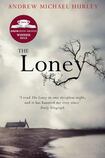
It could be Bunyan. A small group of men and women sets out into the wilderness – in this case the untracked tidal flats of the Loney and its rank hinterland. They see themselves as pilgrims, God-haunted. They are in search of an old conformity, the stark rites of the early church. A test of their piety will be a cure for one of their number, the dumbstruck teenager Hannay.
It is the 20th century, but the Loney is immune to the passage of time. “Time didn’t leak away as it should. It collected as the black water did on the marshes and remained and stagnated in the same way.” The sense of place is absolute. Against the Christian travellers are pitted older liturgies. Foreboding grows. The party has rented the crumbling Moorings for its stay. The damp creeps up the walls. An evil wind sucks the heat out of the chimney.
The Loney is narrated by Hannay's teenage brother, nicknamed Tonto by their shepherd priest, Fr Bernard. The parents are Mummer and Farther. Mummer pits the group against the solid and sane Fr Bernard, invoking the spirit of their previous mentor, Fr Wilfred, who shared Mummer's rigour.
The story grows around you, less a narration than a cold and godless beckoning. A grotesque parody of the crucifixion is found in the woods. A hidden room is uncovered in the Moorings, a cell in which it appears that a child has been held. Tonto and Hannay cross the treacherous sands to Thessaly, a dark and foetid island mansion, and find a pale girl heavy with child and cared for with creepy solicitude by a spivvish towny couple.
A fetish jar is broken – a plastic Jesus, nail clippings, urine among its rancid contents. The jar is designed to protect the Moorings from evil spirits.
The breaking of the spell is followed by a visit from the Pace Eggers, local mummers, their faces hidden behind masks. The old gods do not show themselves readily, but the door has been opened to their power.
Into darkness
Mummer is messianic, looking for the wrong sins in the wrong place. She is devoted to the point of being unhinged, and you fear for the mute Hannay. The rite of tenebrae is performed in an ancient church, the ceremonial "increments of darkness" shadowing the faithful's journey towards the unspeakable. The church is decorated with medieval Doom paintings and depictions of the seven deadly sins.
But the sins that challenge here are not those of gluttony or concupiscence but rather lack of faith, of despair.
Gothic textures accrue. There is an albino cat , a pig’s heart studded with nails, a sheep’s skull, “the white worm of the optic nerve still attached”
An unwholesome fecundity pervades the novel. Fr Bernard is the only one who seems immune to the airs of the Loney and to Mummer’s narrow vision. But solid good sense is not enough to avert ghastly events.
Hannay is more attuned to the import of the place than his brother. He is fascinated with the pregnant girl and her unborn child, and perhaps senses the implications of her presence for the child and for himself.
He has his own idiom of objects. He produces a plastic dinosaur to show that he is sorry, and a jar of nails to indicate one of his frequent headaches.
The brothers uncover a mangy cache of taxidermist’s specimens in a shed. Hannay chooses six stuffed rats as his trove.
Ancient images
The Loney is part of an English Gothic tradition running from the nuanced dread in Wilkie Collins to the ersatz satanic menace in Dennis Wheatley. There is an uncovering of ancient lore, powerful pre-Saxon forces lurking beneath the surface. The old rites are priapic and amoral. There is a need for runes and charms of warding.
Andrew Michael Hurley makes the tradition his own. The writing is brilliantly evocative, from the Tridentine cadences of the congregation’s prayer-bound speech to his perfect eye for the visceral detail.
He is not above throwing in a piece of utilitarian prose to keep things moving, as if worried that the novel will get bogged down in the density of the language and imagery, although there’s little fear of it. Hurley shows genre skill in the framing episodes at the beginning and end.
There is an argument that this crafting isn’t needed, the nudging towards the mainstream, that there is enough momentum in the prose as it stands.
But Hurley can't be faulted for this. The Loney was first published by the specialist supernatural/ horror press, Tarturus, and has deservedly attracted a wide audience.
In the end, the ungodly will not be denied, although the nature of their victory is surprising. Mummer’s burning piety is no match for the devices of the impure. Fr Bernard’s workaday Christianity would have served her better. The virtuous are undone, blinded by their own certainty. Once more the Devil rides out.
Eoin McNamee is the author of the Blue trilogy
















